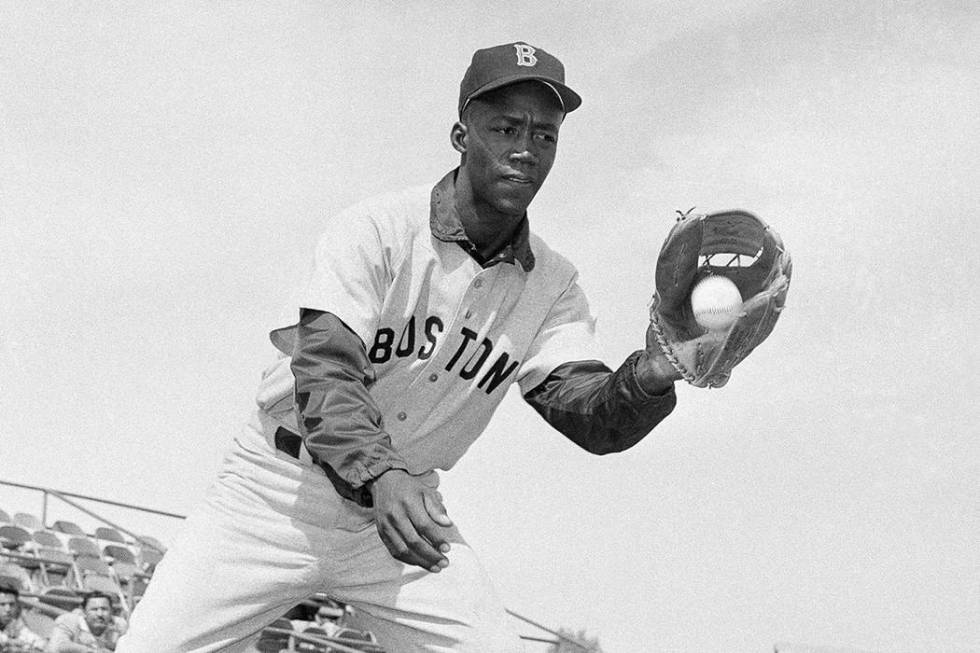Pumpsie Green, 1st black player on Boston Red Sox, dies

BOSTON — Former Boston Red Sox infielder Elijah “Pumpsie” Green, the first black player on the last major league team to field one, has died. He was 85.
A Red Sox spokesman confirmed the death Wednesday night, and the team observed a moment of silence before its game against the Toronto Blue Jays. Green, who was inducted into the Red Sox Hall of Fame in 2018, had been living in California.
A speedy but light-hitting utilityman, Green brought baseball’s segregation era to an end of sorts when he took the field against the Chicago White Sox on July 21, 1959 — more than a dozen years after Jackie Robinson broke baseball’s color barrier with the Brooklyn Dodgers.
Green joined the team on a lengthy road trip and had played nine games before taking the field at Fenway Park for the first time. Green said this year in an interview with NESN, the Red Sox TV network, that he remembered receiving a standing ovation when he came to the plate, batting leadoff.
“It was heart-warming and nerve-wracking,” he told reporters in 1997, when he returned to Boston to take part in ceremonies marking the 50th anniversary of Robinson’s debut. “But I got lucky: I hit a triple off the left-center fence.”
Green didn’t have Hall of Fame talent like Robinson, or Larry Doby, an All-Star who was the first black player in the American League. The Red Sox infielder reached the majors as a role player, just once playing more than 88 games, and never hitting more than six homers or batting better than .278.
Green played parts of four seasons with the Red Sox before finishing his five-year career with the New York Mets, batting .246 overall with a total of 13 homers and 74 RBIs.
But his first appearance in a Boston uniform ended baseball’s ugliest chapter, and the fact that it took the Red Sox so long left a stain on the franchise it is still trying to erase.
A few days after Green was called up, the Red Sox added Earl Wilson, a black pitcher. Green said there was an informal quota system that required teams to have an even number of black players so they would have someone to room with on the road.
There were few blacks in the clubhouse, the offices or the Boston stands, Green said in ‘97.
“Most of the time it was just me,” he said. “It was almost an oddity when you saw a black person walking around the stands.”
But unlike Robinson, Green said, he received no death threats. “It was mostly insults,” he said.
“But you can get those at any ballpark at any time,” he said. “I learned to tune things out.”
Green returned to northern California and worked as a counselor at Berkeley High School before retiring in the 1990s. The Red Sox honored him again before a game in 2009, but he was unable to attend the ceremony in 2018 when he was inducted into the Red Sox Hall of Fame.
Upon his return to Fenway, he noticed that things had improved, but he still saw work to be done.
“Baseball still has its problems, and so does society,” Green said. “I don’t believe things are that much better in baseball or society. Hopefully, it will be shortly.”
A brother, Cornell Green, was a star safety for the Dallas Cowboys.